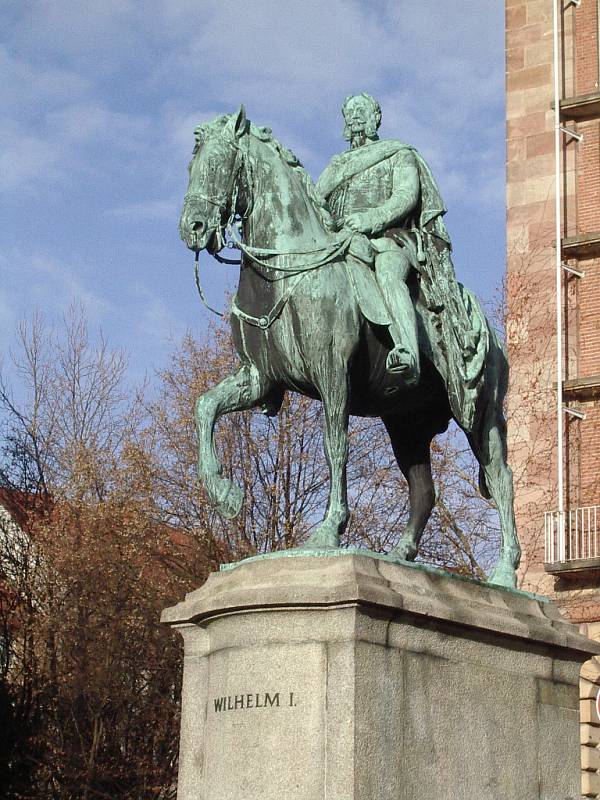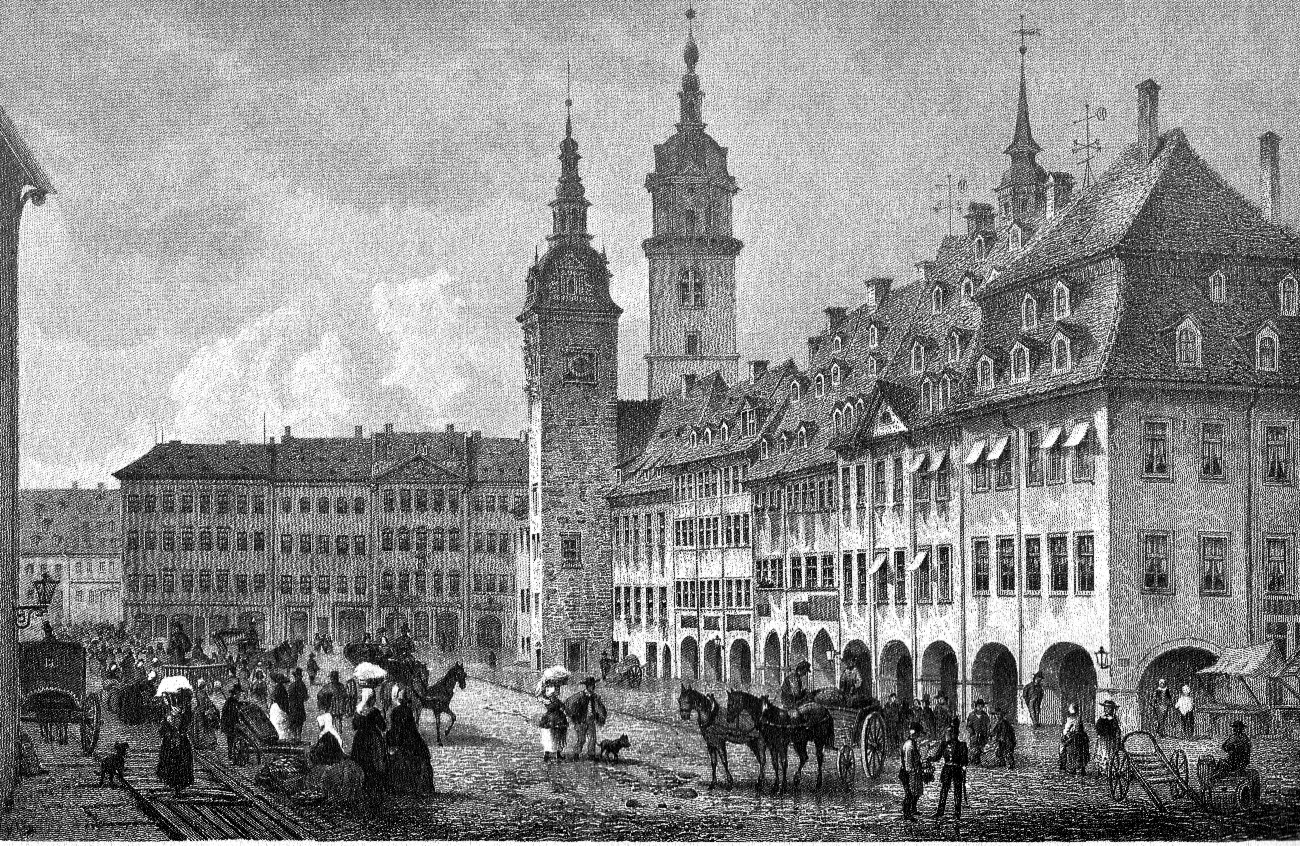|
Wilhelm Von Rümann
Wilhelm von Rümann (11 November 1850 in Hanover – 6 February 1906 in Ajaccio) was a prominent German sculptor, based in Munich. Life Rümann was born in Hanover. He studied from 1872 to 1874 at the Academy of Fine Arts, Munich (''Akademie der Bildenden Künste München''), and from 1880 with Michael Wagmüller.''Künstlerlexikon des Werdenfelser Landes'' From 1887 he taught at the Academy of Fine Arts, Munich. In 1891 he was raised to the nobility. As well as numerous funerary monuments in the Alter Südfriedhof (Old South Burial Ground) in Munich, he created sculptures which are still to be seen in the city: monuments for Georg Simon Ohm (1895, in the courtyard of the Technische Universität München), Max von Pettenkofer (1909) and Carl von Effner (1886) at the Maximiliansplatz (now the Lenbachplatz), the ''Puttenbrunnen'' (Putti Fountain) at the Peace Monument in the Prinzregentenstraße (Munich), Prinzregentenstraße (originally intended for Schloss Herrenchiemsee) and ... [...More Info...] [...Related Items...] OR: [Wikipedia] [Google] [Baidu] |
Hanover
Hanover ( ; ; ) is the capital and largest city of the States of Germany, German state of Lower Saxony. Its population of 535,932 (2021) makes it the List of cities in Germany by population, 13th-largest city in Germany as well as the fourth-largest in northern Germany after Berlin, Hamburg and Bremen. Hanover's urban area comprises the towns of Garbsen, Langenhagen and Laatzen and has a population of about 791,000 (2018). The Hanover Region has approximately 1.16 million inhabitants (2019) and is the largest in the Hannover–Braunschweig–Göttingen–Wolfsburg Metropolitan Region, Hanover–Braunschweig–Göttingen–Wolfsburg Metropolitan Region, the List of EU metropolitan areas by GDP, 17th biggest metropolitan area by GDP in the European Union. Before it became the capital of Lower Saxony in 1946, Hanover was the capital of the Principality of Calenberg (1636–1692), the Electorate of Hanover (1692–1814), the Kingdom of Hanover (1814–1866), the Province of Hannove ... [...More Info...] [...Related Items...] OR: [Wikipedia] [Google] [Baidu] |
Prinzregentenstraße (Munich)
Prinzregentenstraße The Prinzregentenstraße (, '' Prince-Regent Street'') in Munich is one of four royal avenues and runs parallel to Maximilianstraße and begins at '' Prinz-Carl-Palais'', in the northeastern part of the Old Town. The avenue was constructed from 1891 onwards as a prime address for the middle class during the reign of Luitpold, Prince Regent of Bavaria and is named in his honour. The square in the eastern part of the street is named ''Prinzregentenplatz''. Architecture In contrast to Ludwigstraße, the big boulevard of his father Ludwig I and to Maximilianstraße, the boulevard of his brother Maximilian II, Prinzregentenstraße was not planned as an administrative centre with a specially developed style; it was projected as a noble middle-class avenue. Thereby it reflects not only middle-class ideals, but was an expression of the good relation between the citizens, above all of the bourgeoisie and the educated classes, and the house of Wittelsbach. At th ... [...More Info...] [...Related Items...] OR: [Wikipedia] [Google] [Baidu] |
Helmuth Von Moltke The Elder
Helmuth Karl Bernhard Graf von Moltke (; 26 October 180024 April 1891) was a Kingdom of Prussia, Prussian Generalfeldmarschall, field marshal. The chief of staff of the Prussian Army for thirty years, he is regarded as the creator of a new, more modern method of directing armies in the field and one of the finest military minds of his generation. He commanded troops in Europe and the Middle East, in the Second Schleswig War, Austro-Prussian War, and Franco-Prussian War. He is described as embodying "Prussian military organization and tactical genius". He was fascinated with railways and pioneered their military use. He is often referred to as Moltke the Elder to distinguish him from his nephew Helmuth von Moltke the Younger (Helmuth Johann Ludwig von Moltke), who commanded the Imperial German Army, German army at the outbreak of the First World War. He is notably the earliest-born human whose recorded voice is preserved, being born in the last year of the 18th century (1800). He m ... [...More Info...] [...Related Items...] OR: [Wikipedia] [Google] [Baidu] |
Otto Von Bismarck
Otto, Prince of Bismarck, Count of Bismarck-Schönhausen, Duke of Lauenburg (; born ''Otto Eduard Leopold von Bismarck''; 1 April 1815 – 30 July 1898) was a German statesman and diplomat who oversaw the unification of Germany and served as its first Chancellor of Germany, chancellor from 1871 to 1890. Bismarck's ''Realpolitik'' and firm governance resulted in him being popularly known as the Iron Chancellor (). From Junker (Prussia), Junker landowner origins, Otto von Bismarck rose rapidly in Prussia, Prussian politics under King William I, German Emperor, Wilhelm I of Prussia. He served as the Prussian ambassador to Russian Empire, Russia and Second French Empire, France and in both houses of the Landtag of Prussia, Prussian parliament. From 1862 to 1890, he held office as the Minister President of Prussia, minister president and foreign minister of Prussia. Under Bismarck's leadership, Prussia provoked three short, decisive wars against Second Schleswig War, Denmark, Austr ... [...More Info...] [...Related Items...] OR: [Wikipedia] [Google] [Baidu] |
Kaiser Wilhelm I
Wilhelm I (Wilhelm Friedrich Ludwig; 22 March 1797 – 9 March 1888) was King of Prussia from 1861 and German Emperor from 1871 until his death in 1888. A member of the House of Hohenzollern, he was the first head of state of a united Germany. He was regent of Prussia from 1858 to 1861 for his brother Frederick William IV. During the reign of his grandson Wilhelm II, he was known as Emperor Wilhelm the Great (German: ''Kaiser Wilhelm der Große''). The second son of Prince Frederick William and Louise of Mecklenburg-Strelitz, Wilhelm was not expected to ascend to the throne. His grandfather, King Frederick William II died the year he was born, and his father was crowned Frederick William III. Wilhelm fought with distinction during the War of the Sixth Coalition, and afterwards became a prominent figure within the Prussian Army. In 1840, his childless elder brother became King of Prussia, making him heir presumptive. Wilhelm played a major role in crushing the Revolutions ... [...More Info...] [...Related Items...] OR: [Wikipedia] [Google] [Baidu] |
Chemnitz
Chemnitz (; from 1953 to 1990: Karl-Marx-Stadt (); ; ) is the third-largest city in the Germany, German States of Germany, state of Saxony after Leipzig and Dresden, and the fourth-largest city in the area of former East Germany after (East Berlin, East) Berlin, Leipzig, and Dresden. The city lies in the middle of a string of cities sitting in the densely populated northern Ore Mountain Foreland, foreland of the Elster Mountains, Elster and Ore Mountains, stretching from Plauen in the southwest via Zwickau, Chemnitz and Freiberg to Dresden in the northeast, and is part of the Central German Metropolitan Region. Located in the Ore Mountain Basin, the city is surrounded by the Ore Mountains to the south and the Central Saxon Hills, Central Saxon Hill Country to the north. The city stands on the Chemnitz River, which is formed through the confluence of the rivers Zwönitz (river), Zwönitz and Würschnitz in the borough of Altchemnitz. The name of the city as well as the names o ... [...More Info...] [...Related Items...] OR: [Wikipedia] [Google] [Baidu] |
Alois Mayer
Alois Mayer (14 June 1949 – 4 February 2023) was an Austrian politician. A member of the Social Democratic Party of Austria, Social Democratic Party, he served in the Municipal Council and Landtag of Vienna from 1997 to 2015. Mayer died on 4 February 2023, at the age of 73. References 1949 births 2023 deaths Social Democratic Party of Austria politicians Members of the Municipal Council and Landtag of Vienna {{Austria-politician-stub ... [...More Info...] [...Related Items...] OR: [Wikipedia] [Google] [Baidu] |
Martin Scheible
Martin may refer to: Places Antarctica * Martin Peninsula, Marie Byrd Land * Port Martin, Adelie Land * Point Martin, South Orkney Islands Europe * Martin, Croatia, a village * Martin, Slovakia, a city * Martín del Río, Aragón, Spain * Martín River, a tributary of the Ebro river in Spain * Martin (Val Poschiavo), Switzerland England * Martin, Hampshire * Martin, Kent * Martin, East Lindsey, Lincolnshire, a hamlet and former parish * Martin, North Kesteven, Lincolnshire, a village and parish * Martin Hussingtree, Worcestershire * Martin Mere, a lake in Lancashire ** WWT Martin Mere, a wetland nature reserve that includes the lake and surrounding areas North America Canada * Rural Municipality of Martin No. 122, Saskatchewan, Canada * Martin Islands, Nunavut, Canada United States * Martin, Florida * Martin, Georgia * Martin, Indiana * Martin, Kentucky * Martin, Louisiana * Martin, Michigan * Martin, Nebraska * Martin, North Dakota * Martin, Ohio * Martin, South Carolina ... [...More Info...] [...Related Items...] OR: [Wikipedia] [Google] [Baidu] |
Moissey Kogan
Moissey Kogan (12 March 1879 – 3 March 1943) was a Bessarabian Jewish medalist, sculptor and graphic artist who spent much of his time in Paris and travelled throughout Europe. He specialised in creating sculptures and graphic art based on the female form. The ''Moissey Kogan Catalogue Raisonné of Sculpture & Prints Project '' is in the process of compiling a scholarly catalogue raisonné of Moissey Kogan’s sculpture and prints, and is preparing a comprehensive monograph on the artist’s life and career. The Moissey Kogan Archive of the European Cultural Foundation, in Bonn, collects and captures the entire work of the artist. Kogan is sometimes confused with Russian painter Moisey Kogan (1924–2001), who specialized in colorful oil paintings of Russian village life, landscapes, churches etc. Kogan was murdered in Auschwitz during the Holocaust. Biography Early life Moissey Kogan (also known as Moise, Moissej, Moshe) was born to a Jewish merchant in the town of Orhei. Fro ... [...More Info...] [...Related Items...] OR: [Wikipedia] [Google] [Baidu] |
Jakob Hofmann
{{disambiguation ...
Jakob may refer to: People * Jakob (given name), including a list of people with the name * Jakob (surname), including a list of people with the name Other * Jakob (band), a New Zealand band, and the title of their 1999 EP * Max Jakob Memorial Award, annual award to scholars in the field of heat transfer * Ohel Jakob synagogue (Munich) Fictional characters * Jakob, a character from the video game ''Fire Emblem Fates'' See also * Jacob (other) * St. Jacob (other) St. Jacob is James, son of Zebedee, or Saint James the Great. James is used as a translation of the Hebrew name Jacob (Ya'akov). St. Jacob, St. Jacobs or St. Jakob may also refer to: People *Saint James (other) * Saint Jacob of Alaska, ... [...More Info...] [...Related Items...] OR: [Wikipedia] [Google] [Baidu] |
Emil Julius Epple
Emil Julius Epple (6 March 1877 – 25 February 1948) was a German sculptor working mainly in Italy and southern Germany. In 1937, he moved to the Netherlands, becoming a Dutch citizen after the Second World War. Biography Youth Emil Epple was born in the Swabian city of Stuttgart. He grew up in a traditional evangelical teachers family, believed to be of Swiss origin. Education and early career Epple went to the local gymnasium and subsequently to the Stuttgarter Kunstschule (Art School). There, he studied for a couple of years under professor Adolf von Donndorf, before moving to Munich, following classes, from April 1896 onward, at the Akademie der Bildenden Künste by professor Wilhelm von Rümann. After a short stay in Stuttgart and Berlin, Epple looked for inspiration in London. In the British Museum, he carefully studied the Elgin Marbles, a collection of Classical Greek marble sculptures made under the supervision of architect and sculptor Phidias (c. 480 – ... [...More Info...] [...Related Items...] OR: [Wikipedia] [Google] [Baidu] |






